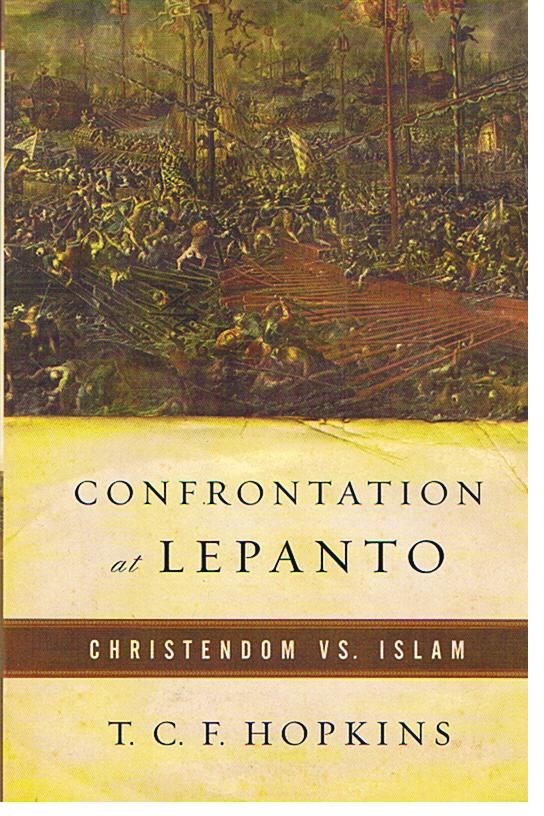All I knew about the great sea battle between the Ottoman Navy and the Holy League, a fleet put together by various European countries, was a stray line from a poem about Don Juan of Austria going to Lepanto. This excellent book provides a vivid and very enjoyable account of why the battle took place, what happened in the battle and the impact it had.
Lepanto was the biggest naval battle between Islamic forces and Christian European forces,the number of causalities were enormous. This was the first time that the Europeans actually banded together to fight the common enemy and it was to mark a historical turning point. The echoes of current events are clear, T.C.F. Hopkins acknowledges them without making too great a feature of them. The differences are greater and more significant.
The rise and expansion of the Ottoman empire,the way that it was steadily expanding West and becoming the dominant force in the Mediterranean is clearly and effectively outlined. While the religious element is clearly important,trade is given due weight as a critical factor in the rising tension.
The great advantage that the Ottoman forces had was a relative degree of unity, they were a single empire and could aim their forces with greater speed and precision where they chose than the fractious states of Europe. The Europeans were involved savage religious struggles between Catholics and Protestants as well as strategic struggles for dominance and trade. The Ottoman’s could pick their targets and deal with individual enemies rather than a united group.
The differences between Venice and the Spanish and Austrian branches of the Hapsburg dynasty,mixed with the concerns of France, England and the Papacy make for riveting reading. The fact that they were forced to actually combine at all, let alone effectively is the true measure of the threat the Ottoman Empire presented to Europe.
T.C.F. Hopkins describes the creation of the Holy League, its leadership by Don Juan and the battle itself with clarity and skill. For a general reader like myself there was just the right amount of detail balanced with a broad sweep to put it into a historical context.
This is a very enjoyable, vivid piece of writing, an excellent popular history.

